Let’s understand the concept of per unit system by solving an example. In the one-line diagram below, the impedance of various components in a power system, typically derived from their nameplates, are presented. The task now is to normalize these values using a common base.
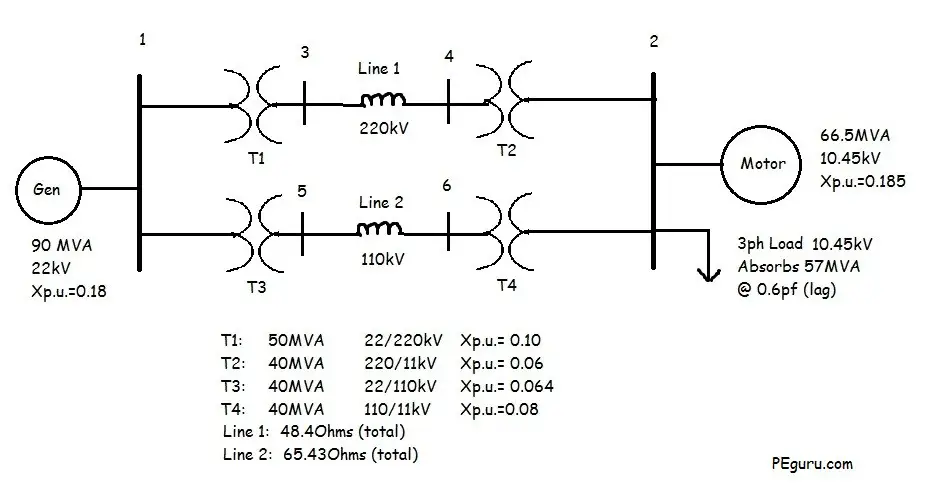
Now that you have carefully examined the system and its parameters, the equivalent impedance diagram for the above system would look something like the following.
Resistive impedance for most components have been ignored. Rotating machines have been replaced with a voltage source behind their internal reactance. Capacitive effects between lines and to ground are ignored as well.
To obtain the new normalized per unit impedances, first we need to figure out the base values (Sbase, Vbase, Zbase) in the power system. Following steps will lead you through the process.
Step 1: Assume a system base
Assume a system wide S_{base} of 100MVA. This is a random assumption and chosen to make calculations easy when calculating the per unit impedances.
So, S_{base} = 100MVA
Step 2: Identify the voltage base
Voltage base in the system is determined by the transformer. For example, with a 22/220kV voltage rating of T1 transformer, the V_{base} on the primary side of T1 is 22kV while the secondary side is 220kV. It does not matter what the voltage rating of the other components are that are encompassed by the V_{base} zone.
See figure below for the voltage bases in the system.
Step 3: Calculate the base impedance
The base impedance is calculated using the following formula:
Z_{base}=\frac{{kV_{base}}^2}{S_{base MVA}} Ohms…..(1)
For T-Line 1: Z_{base}=\frac{(220)^2}{100}= 484 Ohms
For T-Line 2: Z_{base}=\frac{(110)^2}{100}= 121 Ohms
For 3-phase load: Z_{base}=\frac{(11)^2}{100}= 1.21 Ohms
Step 4: Calculate the per unit impedance
The per unit impedance is calculated using the following formulas:
Z_{p.u.}=\frac{Z_{actual}}{Z_{base}} …..(2)
Z_{p.u._{new}}=Z_{p.u._{old}}(\frac{S_{base_{new}}}{S_{base_{old}}})(\frac{V_{base_{old}}}{V_{base_{new}}})^2 …..(3)
The voltage ratio in equation (3) is not equivalent to the transformers voltage ratio. It is the ratio of the transformer’s voltage rating on the primary or secondary side to the system nominal voltage on the same side.
For T-line 1 using equation (2): X_{l1_{p.u.}}=\frac{48.4}{484}= 0.1 pu
For T-line 2 using equation (2): X_{l2_{p.u.}}=\frac{65.43}{121}= 0.5 pu
For 3-Phase load:
Power Factor: \cos^{-1}(0.6)=\angle{53.13}
Thus, S_{3\phi}(load)=57\angle{53.13}
Z_{act}=\frac{(V_{rated})^2}{\overline{S}^*}= \frac{10.45^2}{57\angle{-53.13}}= 1.1495+j1.53267 Ohms
Per unit impedance of 3-phase load using equation (2)= \frac{1.1495+j1.5326}{1.21} = 0.95+j1.2667 pu
For generator, the new per unit reactance using equation (3)
X_{sg}= 0.18(\frac{100}{90})(\frac{22}{22})^2= 0.2 pu
For transformer T1: X_{t1}= 0.1(\frac{100}{50})(\frac{22}{22})^2 = 0.2 pu
For transformer T2: X_{t2}= 0.06(\frac{100}{40})(\frac{220}{220})^2 = 0.15 pu
For transformer T3: X_{t3}= 0.064(\frac{100}{40})(\frac{22}{22})^2 = 0.16 pu
For transformer T4: X_{t4}= 0.08(\frac{100}{40})(\frac{110}{110})^2 = 0.2 pu
For Motor, X_{sm}= 0.185(\frac{100}{66.5})(\frac{10.45}{11})^2 = 0.25 pu
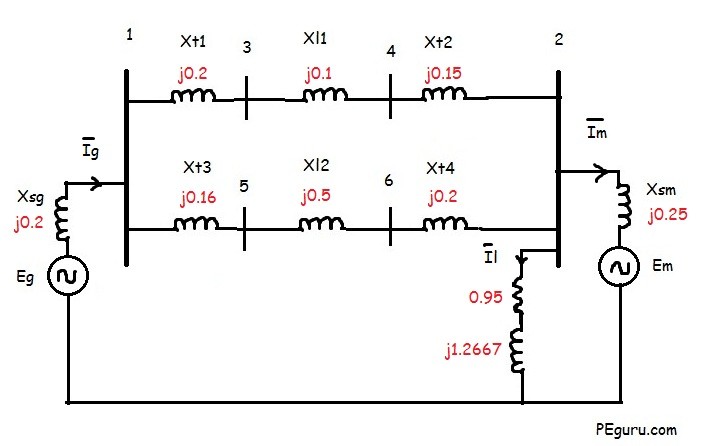
Per Unit System Ebook
If you think you learned something today then you will love the eBook I prepared for you. It has 10 additional and unique per unit problems. Go ahead, preview it on the right. Get the complete version for only $1.00. Thanks for supporting this blog.
Per Unit Systems: Ten Total Problems Solved With Detailed Explanation Aleen Mohammed
- Per unit systems is an important concept in power system analysis. So much so, it shows up in all exams pertaining to power. Besides being taught in higher education, it is quite commonly used by engineers in the power industry. Equipment impedances are furnished in per unit. Source impedance for fault analysis is furnished in per unit. In this book, you will find enough problems solved for you to get the hang of this subject.
To view full load amps due to motor load and inductive load at Bus 2, see this post.
Summary
- Assume a Sbase for the entire system.
- The Vbase is defined by the transformer and any off-nominal tap setting it may have.
- Zbase is derived from the Sbase and Vbase.
- The new per unit impedance is obtained by converting the old per unit impedance on old base values to new ones. See equations (2) and (3).

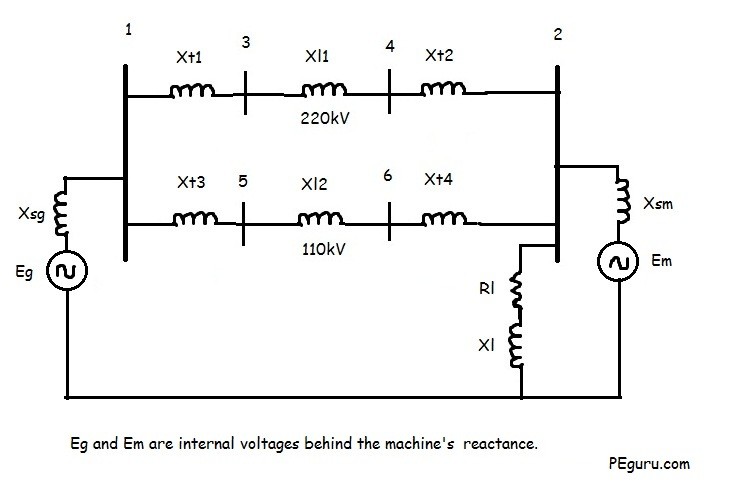
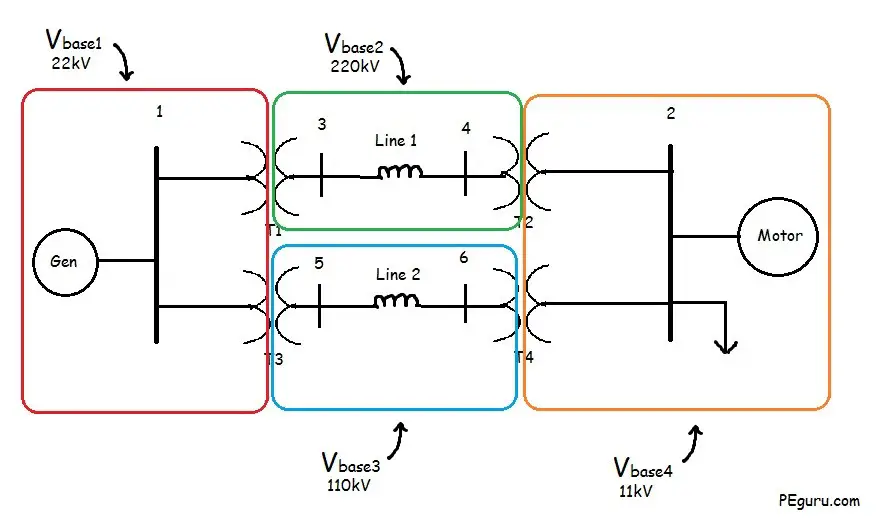
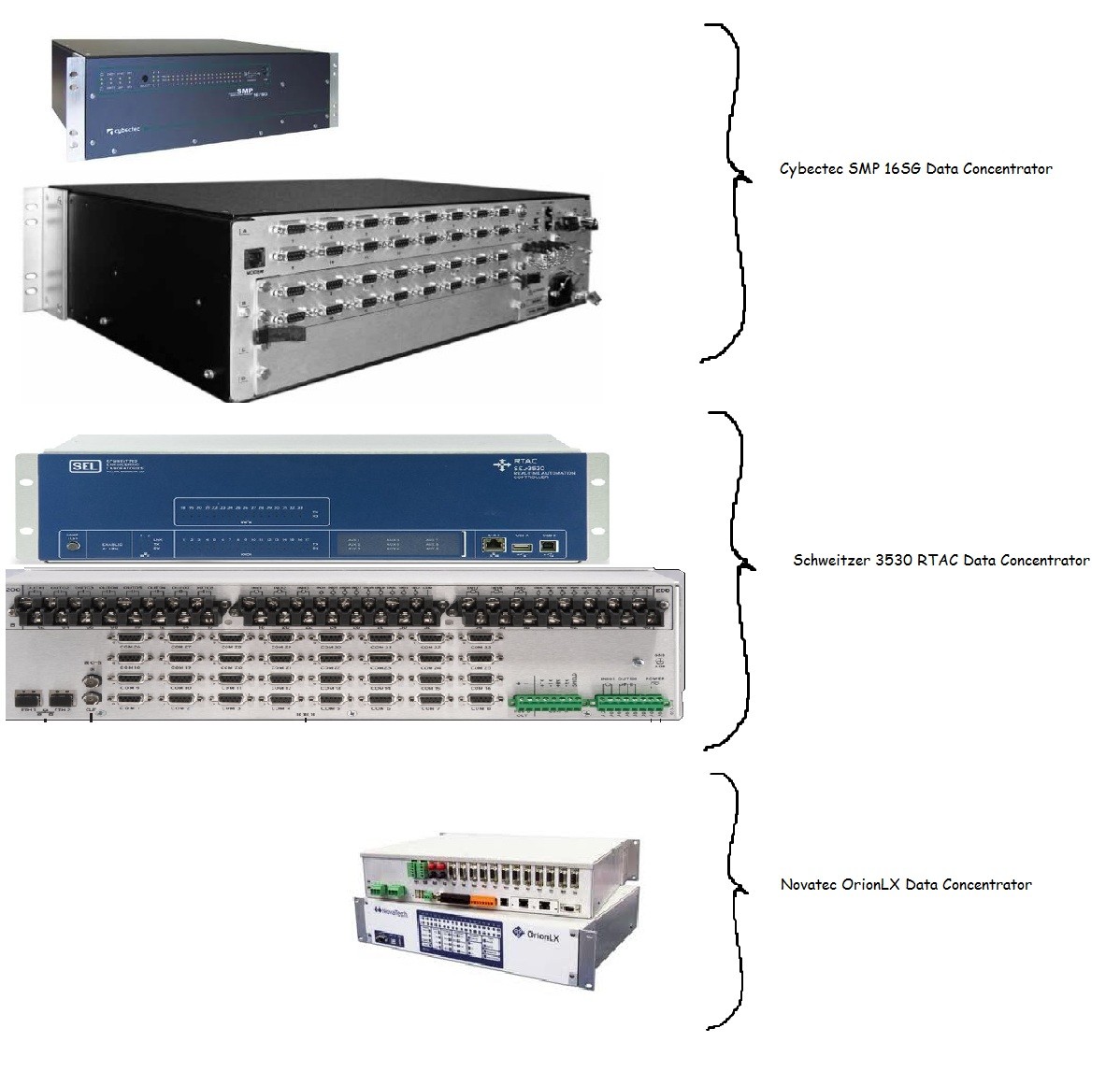
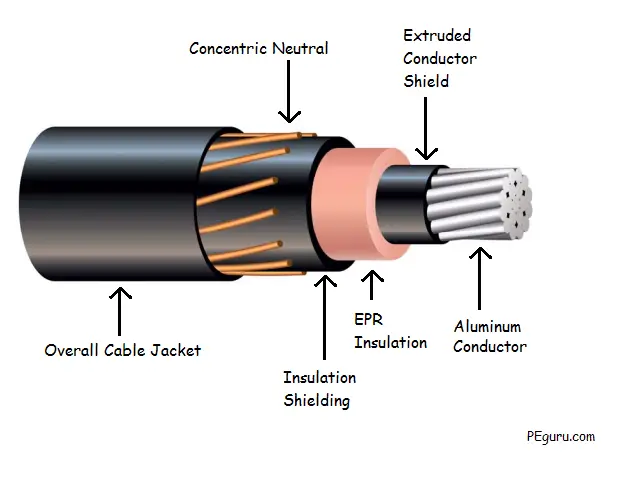

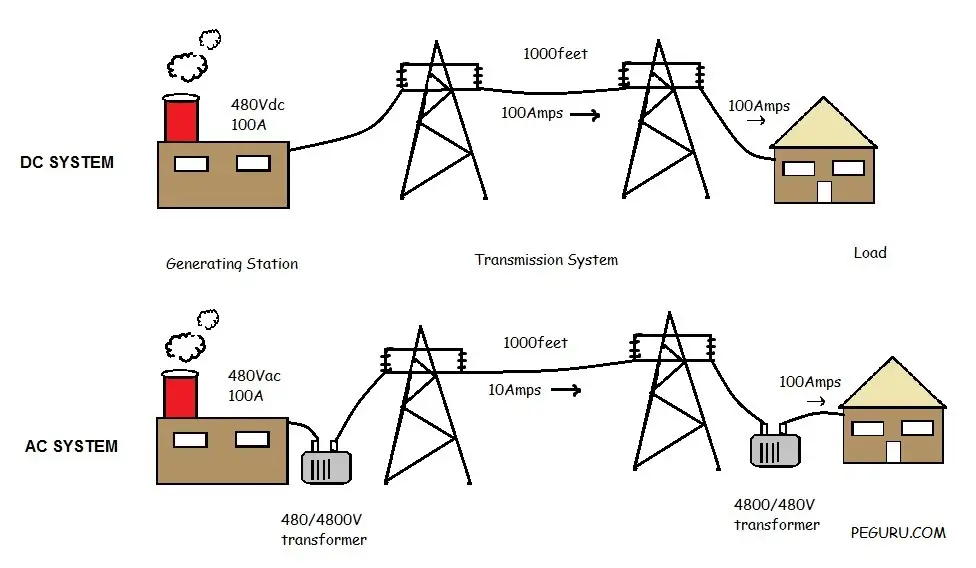
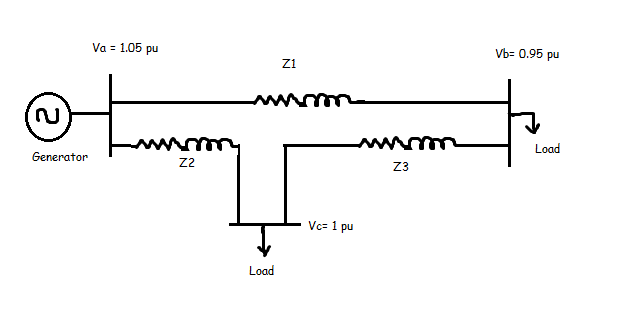

Can we find the short circuit current at each end?
A load of 50mw at 0.8 power factor lagging is taken from the 33kv.( taking a base MVA of 100mva), calculate the terminal voltage of the synchronous machine? (Please help me solve this question) thanks
very useful thanks 🙂
How can we determine the voltage on the bus 1
Do you know how to find the voltage at the bus?
Thanks
Hi
how we can find the voltage in bus1 in PU and in volte
tanks alot save me alot of stress
. Obtain the per unit impedance(reactance) diagram of the power system shown in the fig
G1 : 30MVA , 10.5KV, X?=1.6 ?
G2 : 15MVA , 6.6KV, X?=1.2 ?
G3 : 25MVA , 6.6KV, X?=0.56 ?
T1 (3 phase): 15MVA , 33/11KV , X= 15.2 ? per phase on the high tension side
T2 (3 phase): 15MVA , 33/6.2KV , X= 16 ? per phase on the high tension side
Transmission line : 20.5 ohm per phase
Load A : 15MW , 11KV , 0.9 p.f lagging
Load B : 40MW , 6.6KV , 0.85 p.f lagging
5
how to convert ohms value to per unit value
Hi, great article – thanks very much! I have a similar problem to solve but I am struggling with the Zact calculation. My inputs are Vrated = 4.16kV, S = 2MVA <-36.87. Can you help?!